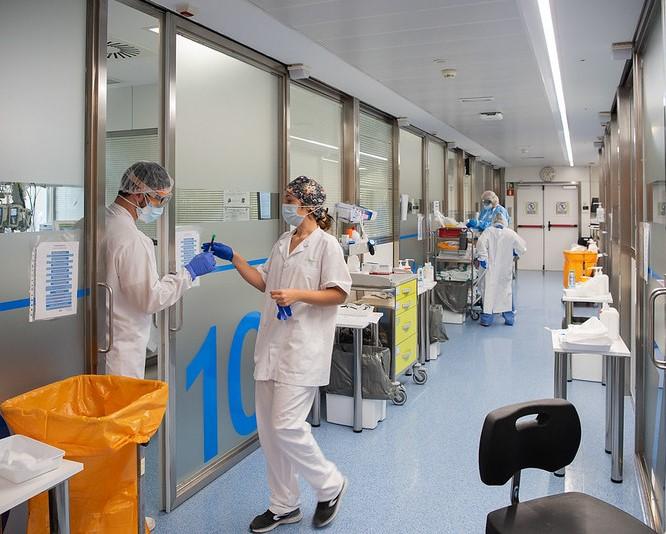More than 1 in 10 COVID-19 patients from 314 UK hospitals acquired their infection from the hospital early in the pandemic, according to a research letter in The Lancet yesterday.
"There are likely to be a number of reasons why many patients were infected in these care settings," said study author Chris A. Green, MBBS, DPhil, in a Lancaster University press release.
"These include the large numbers of patients admitted to hospitals with limited facilities for case isolation, limited access to rapid and reliable diagnostic testing in the early stages of the outbreak, the challenges around access to and best use of [personal protective equipment], our understanding of when patients are most infectious in their illness, some misclassification of cases due to presentation with atypical symptoms, and an under-appreciation of the role of airborne transmission."
Variations by hospital types
The researchers looked at 82,624 patients in the International Severe Acute Respiratory and emerging Infections Consortium (ISARIC) Clinical Characterisation Protocol UK (CCP-UK) prior to Aug 1, 2020, and determined infection dates by looking at admission date, symptom-onset date, and known information about SARS-CoV-2 incubation.
Overall, 11.3% of the patients were infected after admission (95% confidence interval [CI], 11.1% to 11.6%). That proportion rose to at least 15.8% by mid-May 2020, well after the first wave's peak.
With an "extremely conservative threshold," where symptom onset wasn't until at least 14 days after admission in hospital-acquired infections, the researchers say 6.8% of all patients with COVID-19 acquired it nosocomially (95% CI, 6.7% to 7.0%). This model predicts that, at its peak in mid-May, hospital-acquired infections would have reached 8.2%.
The fewest proportion of hospital-acquired COVID-19 cases occurred in acute and general care hospitals (9.7%); whereas most COVID-19 cases in residential community care and mental health hospitals were acquired in-hospital (61.9% and 67.5%, respectively). The researchers say further investigation is needed to understand these discrepancies.
"Unlike at the beginning of the pandemic," the researchers conclude, "there are [now] opportunities to pre-empt hospital-acquired infections and break chains of transmission through regular patient, resident, and staff testing including point-of-care diagnostics, as recently introduced for [National Health Service] staff, coupled with robust hospital infection prevention and control policies that include staff vaccination, environmental disinfection, and appropriate isolation, all supported by sentinel monitoring systems."
Coauthor Annemarie Docherty, PhD, MPH, said in the release, "The underlying reasons for these high rates of transmission in hospitals at the peak of the first wave must be investigated, so that we can improve safety and outcomes for our patients. Rates are considerably lower a year on, and people should not be deterred from attending hospital if they are unwell."






















